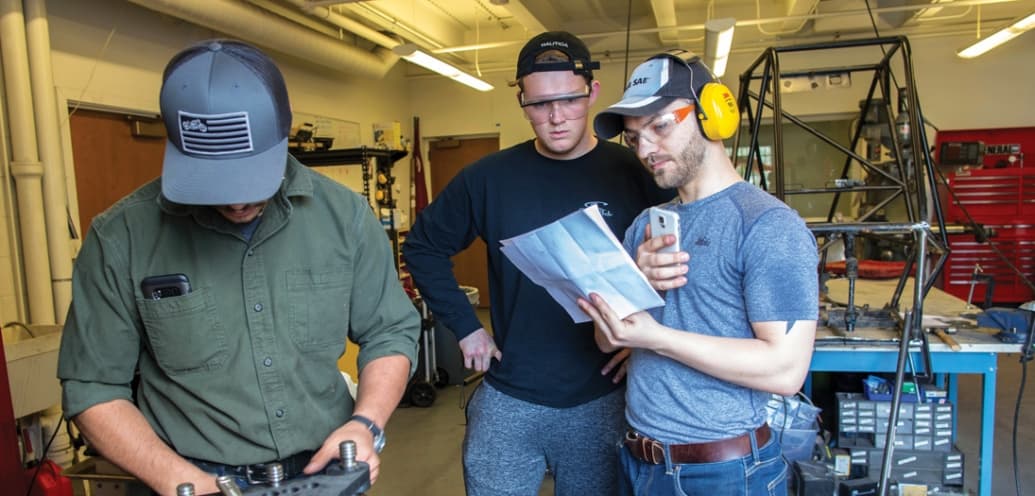It starts with a few engineering students sifting through a massive list of rules.

Nine months and many calculations, simulations, trials, and revisions later, the students show up at a scenic motocross track near Portland, Oregon, ready to impress with an off-road race car.
The Baja SAE team, based in SPU’s Department of Engineering and Computer Science, goes beyond textbook theory and designs to build and test the performance of a single-seat, all-terrain recreational sporting vehicle prototype. Then the team heads south, where their vehicle competes against 100 others, all designed by university students from around the world.
This year’s annual competition, hosted by SAE International, is set for May 30 to June 2 at a motocross racetrack in Washougal, Washington.
Teams must first pass a technical inspection to participate. Around 20 teams fail that inspection each year, according to Aaron Coe, a senior electrical engineering major on the team.
During the first two days of the competition, judges evaluate the design and sales presentation of the vehicles. Next, vehicles are evaluated in motion with an acceleration test, a maneuverability test, a hill climb, and a rock crawl. This is followed by an endurance race where many vehicles must be repaired after breaking down on the track.
“You kind of forget about the goal when you’re working, but the feeling of having the car built after months or years of nose to the grindstone is amazing,” Coe says. “We also learn a lot of real-world engineering skills like mathematically justifying design decisions.”
Every team is limited to a stock 10-horsepower engine, and the challenge is to engineer a competitive power-to-weight ratio to ensure a lighter car able to accelerate faster than its competitors. SPU’s students use a computer program to simulate design elements and test them virtually before adding them to the physical vehicle.

The team, now three years old, includes Coe, senior mechanical engineering student Jon Cassarrubias, senior mechanical engineering student Hunter McSwain, senior business administration student Michael McCaffrey, and Associate Professor of Mechanical Engineering and Baja faculty advisor Adam Arabian. Cassarrubias and McSwain founded the program.
Every year, busy students with intense courseloads dedicate hours to the Baja project.
“The fact that they have the passion and they succeed with incredibly little need for outside guidance is amazing,” Arabian said. “They have a level of ownership that you want from an engineer.”
Engineering students at SPU tend to possess a lot of technical skill, but the Baja competition challenges them to understand physical problems such as suspension geometry, says Cassarrubias.
Many engineering firms hire primarily from SAE competitions. In addition, Coe and Cassarrubias can now say they raised money, built a car, and led a team of 20, all before they graduated. Those skills should give them good job prospects.
A new bachelor of science in mechanical engineering won’t hurt either.
The Baja project raised the visibility of the program, which may have helped the department’s case for the new major. SPU added the new program to the 2018–19 Undergraduate Catalog this spring.
For Coe, Baja is a unique SPU experience.
“Nowhere else on campus are people building cars and racing the teams from other universities,” he says. “It takes grit. To pass all the tests and compete against other colleges is incredibly satisfying.”




